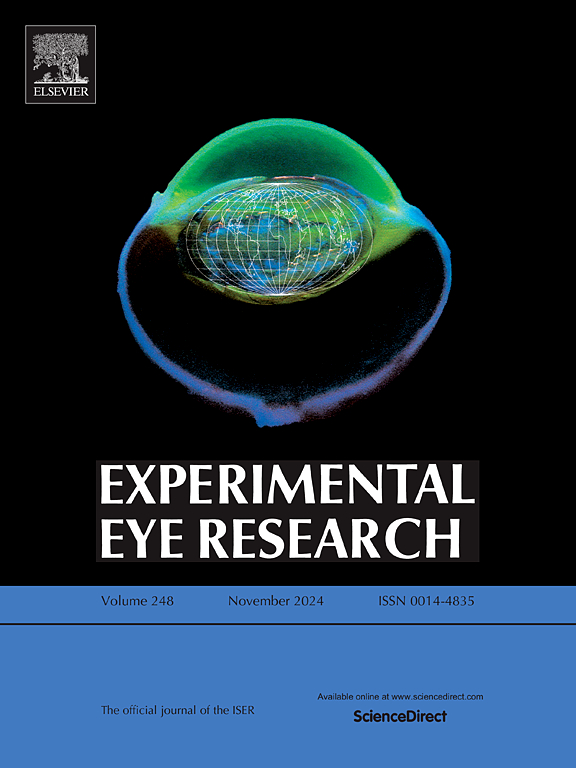色素上皮衍生因子及相关肽对人诱导多能干细胞向视网膜神经节细胞分化的影响
IF 3
2区 医学
Q1 OPHTHALMOLOGY
引用次数: 0
摘要
视网膜神经节细胞变性是视神经病变中不可逆视力丧失的主要原因。色素上皮衍生因子(PEDF)及其较小的肽成分(44-mer和17-mer)显示出神经保护作用。在这项研究中,我们采用逐步方案研究了它们对人诱导的多能干细胞向视网膜神经节细胞分化的影响。第18天加入不同浓度的PEDF、44-mer和17-mer。所研究的化合物显著上调视网膜神经节细胞特异性(Brn3b, Sncg),视网膜祖细胞(Pax6)和神经轴突标志物(Tau, NFH)的表达。它们还高度增加了Brn3b的表达,以及神经突的长度和密度,支持它们的神经营养特性。我们的研究结果表明,PEDF及其较小的肽成分,44-mer和17-mer,可以被认为是促进视网膜神经节细胞从人诱导的多能干细胞分化的神经保护剂。44-mer和17-mer具有与全长PEDF相当甚至更高的效果,并且可以绕过PEDF的使用限制。本文章由计算机程序翻译,如有差异,请以英文原文为准。

The effects of pigment epithelium-derived factor and associated peptides on the differentiation of retinal ganglion cells from human-induced pluripotent stem cells
Retinal ganglion cell degeneration is the main cause of irreversible vision loss in optic neuropathies. Pigment epithelium-derived factor (PEDF) and its smaller peptide components (44-mer and 17-mer) have shown neuroprotective effects. In this study, using a stepwise protocol we investigated their effects on human-induced pluripotent stem cell differentiation to retinal ganglion cells. Various concentrations of PEDF, 44-mer and 17-mer were added at day 18. Investigated compounds significantly upregulated the expression of retinal ganglion cells-specific (Brn3b, Sncg), retinal progenitor (Pax6) and neuroaxonal markers (Tau, NFH). They also highly increased Brn3b expression, as well as neurite length and density, supporting their neurotrophic properties. Our findings suggest that PEDF and its smaller peptide components, 44-mer and 17-mer, can be suggested as neuroprotective agents for the promotion of retinal ganglion cell differentiation from human-induced pluripotent stem cells. 44-mer and 17-mer have comparable or even higher effects to full-length PEDF and might also bypass PEDF usage limitations.
求助全文
通过发布文献求助,成功后即可免费获取论文全文。
去求助
来源期刊

Experimental eye research
医学-眼科学
CiteScore
6.80
自引率
5.90%
发文量
323
审稿时长
66 days
期刊介绍:
The primary goal of Experimental Eye Research is to publish original research papers on all aspects of experimental biology of the eye and ocular tissues that seek to define the mechanisms of normal function and/or disease. Studies of ocular tissues that encompass the disciplines of cell biology, developmental biology, genetics, molecular biology, physiology, biochemistry, biophysics, immunology or microbiology are most welcomed. Manuscripts that are purely clinical or in a surgical area of ophthalmology are not appropriate for submission to Experimental Eye Research and if received will be returned without review.
 求助内容:
求助内容: 应助结果提醒方式:
应助结果提醒方式:


